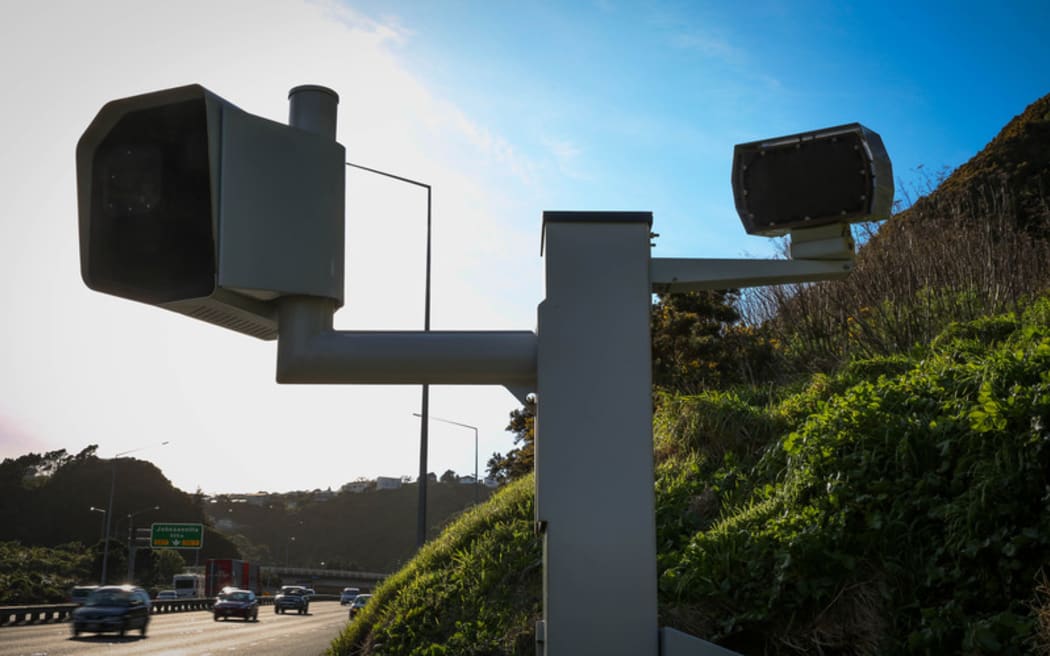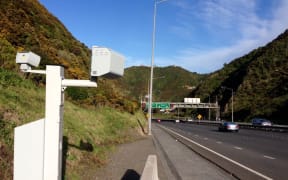
A speed camera in Wellington's Ngauranga Gorge. Photo: RNZ / Alexander Robertson
The number of motorists detected breaking the law has kept climbing during the course of a six-month trial of more powerful road safety cameras.
Waka Kotahi's trial has just ended at three spots in Auckland using new cameras that can see inside a car.
A total of 103,000 drivers were snapped using cellphones in the last three months of the trial, 7000 more more than in the first three months - to make a grand total of almost 200,000 phone offences.
The cameras also ran for four months spotting seatbelt offences, and these totalled 42,500, rising from 8600 a month in July to 15,000 in November.
The cameras installed at two highway spots and one local road, ran until 23 November.
No one is being ticketed; to do that requires the law to be changed, which it is likely to be next year.
The trial of the limits of the new technology comes ahead of Waka Kotahi taking over the camera network from police, and renewing and expanding it.
The results would take four months to analyse, the agency said.
"Waka Kotahi trialled safety cameras to get a better understanding of how many people drive while using their mobile phones and don't wear their seatbelts," it said.
The phone offence rate was three times the seatbelt rate - 1.58 percent of motorists, versus 0.5 percent.
In total, 12 million vehicles were caught on camera.
"All images taken were deleted within 48 hours, with a small number of anonymised images kept for reporting purposes," the agency said.
Internal documents showed the agency expected the new cameras to triple the number of drivers caught, increasing from 1 million to 3m offences a year before levelling off.
The agency's director of land transport, Kane Patena, said driver distraction contributed to almost 8 percent of fatal crashes, while 90 people a year died in smashes because they did not wear a seatbelt.
"However, the scale of actual distracted driving and seatbelt non-compliance in general is mostly anecdotal," he said.
"The purpose of this trial is twofold - to test the camera technology and ensure that it is capable of detecting offences, and to build on the evidence base to help us better understand the scale of illegal mobile phone use and non-wearing of seatbelts.
"Better evidence on these issues will help shape new initiatives to encourage people to make safer choices while driving."
The cameras were able to detect any driver whose hands were not both on the steering wheel.





